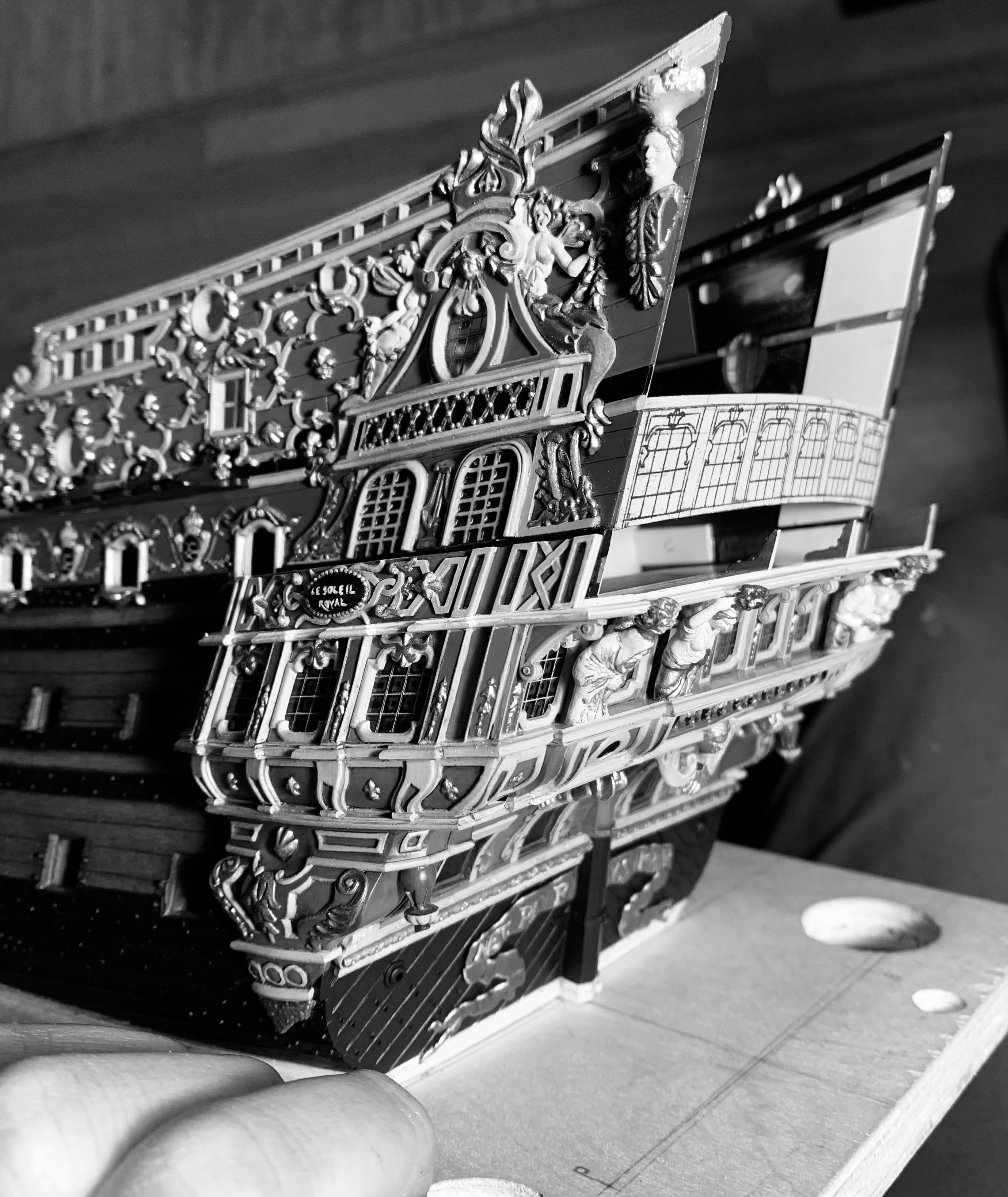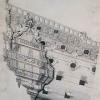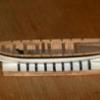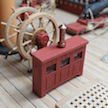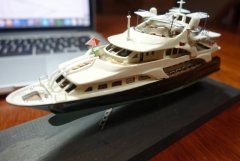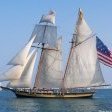-
Posts
3,220 -
Joined
-
Last visited
Reputation Activity
-
 Hubac's Historian reacted to Landlubber Mike in Le Soleil Royal by EJ_L - FINISHED - Sergal - Scale 1:77 - 1669 Version
Hubac's Historian reacted to Landlubber Mike in Le Soleil Royal by EJ_L - FINISHED - Sergal - Scale 1:77 - 1669 Version
Love the blue and the carvings. Very nice job!
-
 Hubac's Historian reacted to EJ_L in Le Soleil Royal by EJ_L - FINISHED - Sergal - Scale 1:77 - 1669 Version
Hubac's Historian reacted to EJ_L in Le Soleil Royal by EJ_L - FINISHED - Sergal - Scale 1:77 - 1669 Version
O.C., Vic, Patrick, Martyn, thank you for all the kind words and thanks to all those who have hit the like button.
This is my first time carving the decorations as I have always used the kit provided ones in the past. Every model I always talk about wanting to makes my own but I never felt I had the confidence and skill to do them. Then there was also the time factor and often impatience would get the better of me and I would just use the kit decorations to get them done so I could move on. Nothing wrong with doing that as I have some very nice models that have use those decorations. What bothered me was seeing all these other beautiful models in which the builder has carved their own and trying to justify my excuses for not doing the same. So finally I have started to carve and now I don't think I would want to go back. Yes it takes a lot more time but, it is the pride in each piece when done that makes it worth the time and effort. I know that the quality will improve with time and practice and I have the time to give.
Thanks again for stopping in and I hope to have another update soon!
-
 Hubac's Historian got a reaction from Elijah in Le Soleil Royal by EJ_L - FINISHED - Sergal - Scale 1:77 - 1669 Version
Hubac's Historian got a reaction from Elijah in Le Soleil Royal by EJ_L - FINISHED - Sergal - Scale 1:77 - 1669 Version
I encourage you to carve the same ornament for the starboard side, before moving on to the next ornament. The reason being that your carving technique will improve as you go, and you want to have consistency from one side to the other. That way, your improvement will be more evenly dispersed throughout the whole composition of the stern.
-
 Hubac's Historian got a reaction from Elijah in Le Soleil Royal by EJ_L - FINISHED - Sergal - Scale 1:77 - 1669 Version
Hubac's Historian got a reaction from Elijah in Le Soleil Royal by EJ_L - FINISHED - Sergal - Scale 1:77 - 1669 Version
Hey EJ - the stern is really coming along nicely. The windows look terrific and I agree that leaving out the glass is a wise move.
The quarter galleries are a daunting task on this model. If I may make a suggestion, while it is still early in the construction phase: I think that if I were building this same model - rather than plank over these vertical framing ribs for the upper finishing of the QG - I would carve a solid piece of close-grained wood (maybe poplar, because it will be painted and poplar is easily worked). This affords the builder an opportunity to improve the outline of the upper finishing and the depth of it’s shape. The complicating factor, of course, is whether re-shaping the upper finishing will make it more difficult to use the kit supplied ornament.
Either way, it will turn out well. To my mind, though, this is one area where an upgrade is worth considering.
-
 Hubac's Historian got a reaction from popeye the sailor in La Renommèe by Landlubber Mike - Euromodel - Scale 1:70
Hubac's Historian got a reaction from popeye the sailor in La Renommèe by Landlubber Mike - Euromodel - Scale 1:70
Hi Mike,
I think your instinct to lower the seat for the figurehead is the correct approach. If the angle of the bowsprit is within range, and the scrolled end of head rails terminates where it is supposed to beneath the bowsprit - then lowering the seating of the figurehead shouldn’t interfere with anything else.
-
 Hubac's Historian got a reaction from druxey in HMS Montague 1779 by garyshipwright - 74-gun Alfred-class
Hubac's Historian got a reaction from druxey in HMS Montague 1779 by garyshipwright - 74-gun Alfred-class
Wow Gary! Another really excellent 74, and a wry sense of humor to go with it. I’ll be following your Alfred with enthusiasm. It continually amazes me, on this site, the many talents and accomplishments of other modelers. Great work, so far!
- Marc
-
 Hubac's Historian reacted to SJSoane in HMS Bellona 1760 by SJSoane - Scale 1:64 - English 74-gun - as designed
Hubac's Historian reacted to SJSoane in HMS Bellona 1760 by SJSoane - Scale 1:64 - English 74-gun - as designed
Hi John, Marc, yes, this model of the Bellona is absolutely captivating. I have studied photos of it for years, had a chance to examine it close up, and it still sings to me after all these years. The the lines of the ship, the exposed methods of construction, the assured craftsmanship of the model and its 250 year old patina, make this a timeless classic.
As best I understand from the various Brian Lavery writings about this model, it was likely used as a demonstration or study for some proposed changes in the hull framing system. One side is framed in a conventional way, and the other side proposes a potentially stronger but more expensive way to run frames from keel to top with fewer interruptions. One side is partially planked, the other has no planking.
druxey can probably give you a better understanding of the ribbands, the thin bands running longitudinally. They were removed as planking proceeded up the hull, and were initially used to align and fair the frames. Ed Tosti's books on the Naiad frigate illustrate how useful these were for keeping the hull together and aligned before the more permanent longitudinal structural pieces like wales, spirketting, deck clamps, planking, etc., finally locked everything together.
It is interesting in the Bellona model that parts of planking are inserted between the ribbands, since these would not have been in the same place at the same time in the actual construction. I supppose they needed the ribbands to hold the model together, but wanted to suggest the actual lines of planking on one side while primarily concentrating on showing the framing system.
I did not concern myself with ribbands on my model, because the stylized admiralty or dockyard framing system locks the frames together with no spaces between. This causes expansion and contraction problems with humidity changes, as I discussed earlier, but it does away with the need for ribbands.
Best wishes,
Mark
-
 Hubac's Historian reacted to druxey in HMS Bellona 1760 by SJSoane - Scale 1:64 - English 74-gun - as designed
Hubac's Historian reacted to druxey in HMS Bellona 1760 by SJSoane - Scale 1:64 - English 74-gun - as designed
The 'narrow strakes' are called ribbands. Where they curve sharply at the bow and stern they are cut to shape they are termed harpins. These are temporary battens to secure the framing until the planking is hung. Generally, they follow the lines of the floor and futtock joints and run a few feet above and below them.
-
 Hubac's Historian got a reaction from Alan Cabrera in MEDDO first carving attempts with #11
Hubac's Historian got a reaction from Alan Cabrera in MEDDO first carving attempts with #11
Sharpening chisels is a subject with much variation according to personal preference. The nice thing about "micro" tools is that it is a micro job to tune them up and keep them sharp.
This is what I do with all of my edge tools. I bought a two-sided oil stone at Home Depot a number of years ago. I use the coarse side to shape my bevel, and the fine side to refine my edge. Then I move to a ceramic "stone" that I bought from Woodworkers Supply that never dishes out from wear, to further refine the edge. Then I move on to a 5000 grit wet stone. At each stage, I'm lapping the back of the tool to help work the "wire" that forms along the edge, so that at the next and final stage, the wire releases and I have a truly razor sharp edge.
The final stage is to strop along a piece of leather that I've loaded with a superfine abrasive compound make by Tormek. The key to all of this - whether or not you manage to keep the bevels of your straight chisels perfectly flat or slightly rounded - is to always pull the tool across the stone or strop so that the edge is trailing. Often, you will see someone working a single edge tool back and forth across a stone, but I have found this to be counter-productive, as you inevitably end up grinding micro-bevels into the tool edge that prevent you from refining a consistent hone along the length of the edge.
a final micro-bevel is considered, by some, to be a desireable feature, but that, in itself, is a whole other subject of conversation that doesn't even apply to micro carving tools.
In the absence of stones, one can achieve the same degree of bevel shaping and edge-refinement with non-loading sandpaper, in a number of grits, upon a thick piece of glass (1/4" or thicker).
When it comes to gouges or any other type of curved, edge tool, it does take some practice to learn how to roll the tool along the stone so that the whole edge gets honed with each pass, but this is not so difficult to master.
Usually, micro chisels are not made of such hard steel that it is laborious to re-shape and sharpen an edge, if you mess it up. If you follow some sequence of sharpening like I laid out, you'll he able to keep a razor edge for quite a while, simply by stropping, before the compound deforms the edge enough to necessitate re-sharpening. Even then, I find that the ceramic stone is as far back as I need to go to quickly re-shape and hone an edge.
-
 Hubac's Historian got a reaction from Old Collingwood in La Renommèe by Landlubber Mike - Euromodel - Scale 1:70
Hubac's Historian got a reaction from Old Collingwood in La Renommèe by Landlubber Mike - Euromodel - Scale 1:70
Hi Mike,
I think your instinct to lower the seat for the figurehead is the correct approach. If the angle of the bowsprit is within range, and the scrolled end of head rails terminates where it is supposed to beneath the bowsprit - then lowering the seating of the figurehead shouldn’t interfere with anything else.
-
 Hubac's Historian got a reaction from popeye the sailor in Barque Stefano by donrobinson - MarisStella - 1:63
Hubac's Historian got a reaction from popeye the sailor in Barque Stefano by donrobinson - MarisStella - 1:63
Your planking is superbly done, Don. In all honesty, though, I don’t love the look of the finished beech. Just my personal preference. It’s a shame to cover the planking, but I think that might be the best presentation.
-
 Hubac's Historian reacted to donrobinson in Barque Stefano by donrobinson - MarisStella - 1:63
Hubac's Historian reacted to donrobinson in Barque Stefano by donrobinson - MarisStella - 1:63
Doug: You will do just fine, it is not as hard as it looks a sharp chisel does help though. I'm looking forward to you catching up to me.
Ian: good to hear from you, I'm finally making a little progress and thanks for the kudos
Bob: Just a little nasty Bob, I do know when you get your kit you will make it look a lot easier and nicer!!!
H.H.: I 100% agree with you. The beech looked fine, I thought, before staining but with the stain it is not appealing what so ever. I will keep using it, if for anything, it"s bending capabilities. I am still very happy and surprised how it is so easily manipulated to shape, well worth keeping on the list of woods to use.
-
 Hubac's Historian got a reaction from russ in La Renommèe by Landlubber Mike - Euromodel - Scale 1:70
Hubac's Historian got a reaction from russ in La Renommèe by Landlubber Mike - Euromodel - Scale 1:70
Hi Mike,
I think your instinct to lower the seat for the figurehead is the correct approach. If the angle of the bowsprit is within range, and the scrolled end of head rails terminates where it is supposed to beneath the bowsprit - then lowering the seating of the figurehead shouldn’t interfere with anything else.
-
 Hubac's Historian got a reaction from EJ_L in Barque Stefano by donrobinson - MarisStella - 1:63
Hubac's Historian got a reaction from EJ_L in Barque Stefano by donrobinson - MarisStella - 1:63
Your planking is superbly done, Don. In all honesty, though, I don’t love the look of the finished beech. Just my personal preference. It’s a shame to cover the planking, but I think that might be the best presentation.
-
 Hubac's Historian got a reaction from robdurant in Barque Stefano by donrobinson - MarisStella - 1:63
Hubac's Historian got a reaction from robdurant in Barque Stefano by donrobinson - MarisStella - 1:63
Your planking is superbly done, Don. In all honesty, though, I don’t love the look of the finished beech. Just my personal preference. It’s a shame to cover the planking, but I think that might be the best presentation.
-
 Hubac's Historian got a reaction from Stuntflyer in The Hayling Hoy 1760 by Stuntflyer (Mike) - 1:48 scale
Hubac's Historian got a reaction from Stuntflyer in The Hayling Hoy 1760 by Stuntflyer (Mike) - 1:48 scale
Every complimentary thing, everyone else has said - me too!
-
 Hubac's Historian got a reaction from Canute in The Hayling Hoy 1760 by Stuntflyer (Mike) - 1:48 scale
Hubac's Historian got a reaction from Canute in The Hayling Hoy 1760 by Stuntflyer (Mike) - 1:48 scale
Every complimentary thing, everyone else has said - me too!
-
 Hubac's Historian got a reaction from Omega1234 in Licorne 1755 by mtaylor - 3/16" scale - French Frigate - from Hahn plans - Version 2.0 - TERMINATED
Hubac's Historian got a reaction from Omega1234 in Licorne 1755 by mtaylor - 3/16" scale - French Frigate - from Hahn plans - Version 2.0 - TERMINATED
I’ll be following along more closely, Mark, as you approach the challenge of masting. Though you are working at a period a good deal later than mine (some 60 years), your log has had many fruitful discussions. As I did with the random length decking, I expect to learn much more about the makeup and particulars of mid-18th century French masting. Your ship is coming along beautifully Mark, and I appreciate your efforts at re-working various details to get it right.
Here’s to a happy and healthful 2018 for you and your family!
-
 Hubac's Historian got a reaction from Blue Ensign in Le Superbe by Blue Ensign - FINISHED - Heller - PLASTIC - Built as "Le Praetorian", after Boudriot
Hubac's Historian got a reaction from Blue Ensign in Le Superbe by Blue Ensign - FINISHED - Heller - PLASTIC - Built as "Le Praetorian", after Boudriot
Incredible model and just an awesome sail-making tutorial! This is such a great example of how much better these Heller kits can be made through research and effort. Great job!
-
 Hubac's Historian got a reaction from mtaylor in HMS Bellona 1760 by SJSoane - Scale 1:64 - English 74-gun - as designed
Hubac's Historian got a reaction from mtaylor in HMS Bellona 1760 by SJSoane - Scale 1:64 - English 74-gun - as designed
Wow! This looks like a superb and clean build. The fairing of your lines is excellent! I will be following along.
All the best,
Marc
-
 Hubac's Historian got a reaction from MEDDO in The Hayling Hoy 1760 by Stuntflyer (Mike) - 1:48 scale
Hubac's Historian got a reaction from MEDDO in The Hayling Hoy 1760 by Stuntflyer (Mike) - 1:48 scale
Every complimentary thing, everyone else has said - me too!
-
 Hubac's Historian reacted to Stuntflyer in The Hayling Hoy 1760 by Stuntflyer (Mike) - 1:48 scale
Hubac's Historian reacted to Stuntflyer in The Hayling Hoy 1760 by Stuntflyer (Mike) - 1:48 scale
Thanks guys for the kind words and for all the "Likes".
Right now I'm trying to decide whether to fair the exterior hull or continue making deck clamps.
Mike
-
 Hubac's Historian got a reaction from popeye the sailor in Licorne 1755 by mtaylor - 3/16" scale - French Frigate - from Hahn plans - Version 2.0 - TERMINATED
Hubac's Historian got a reaction from popeye the sailor in Licorne 1755 by mtaylor - 3/16" scale - French Frigate - from Hahn plans - Version 2.0 - TERMINATED
I’ll be following along more closely, Mark, as you approach the challenge of masting. Though you are working at a period a good deal later than mine (some 60 years), your log has had many fruitful discussions. As I did with the random length decking, I expect to learn much more about the makeup and particulars of mid-18th century French masting. Your ship is coming along beautifully Mark, and I appreciate your efforts at re-working various details to get it right.
Here’s to a happy and healthful 2018 for you and your family!
-
 Hubac's Historian got a reaction from hexnut in Soleil Royal by Hubac's Historian - Heller - An Extensive Modification and Partial Scratch-Build
Hubac's Historian got a reaction from hexnut in Soleil Royal by Hubac's Historian - Heller - An Extensive Modification and Partial Scratch-Build
Thank you very much, Mike, for your kind words. I really appreciate your taking the time to read through my log. I am nothing, if not verbose!
As a matter of fact, I am drafting an intro to something. Probably not a book, per se, but maybe a solid pre-amble to this entire build-log, which I will eventually edit more thoroughly. This pre-amble is tentatively titled The Gilded Lilly: A Meditative Reconstruction of Laurent Hubac’s Post-Refit Soleil Royal of 1689. Verbose .
Owing largely to the flawed nature of the Heller kit, my attempts to modify it have drawn the attention of many of the best scholars of the epoch, and of the ship, herself; J.C. Lemineur, Gerard Delacroix, Andrew Peters (I wrote to him, really, but he was very helpful), Michel Saunier, Marc Yeu (AKA Neko), Cedric LieGeois, Dan Pariser and a host of other MSW contributors who have been instrumental in helping me to understand my own assumptions and misconceptions about the ship. Whether the model succeeds or fails, it has been so gratifying for me to see the ship debated, and to see the particularly excellent work of Michel Saunier, Marc Yeu and Cedric LieGeois find it’s way onto MSW.
As for my model, I stake no claim to be a serious scholar, myself, or to have any definitive conclusions about her appearance. But I do spend quite a lot of time thinking, even in a meditative and subconscious sense, about how to reconcile all of this information - the Berain drawings, the VDV portraits of her contemporaries and the body of modern scholarship into one coherent picture of what might have been. It is, I hope, a plausible theory that will spark continued debate and more efforts to model the ship. In the end, though, what I am essentially attempting is to see how closely I can modify this flawed Heller kit into a plastic approximation of Marc Yeu’s excellent scratch-built model.
Speaking of Marc, I decided, after all, to grind away and re-position the aft-most main deck port, on the port side:
Here is the port re-positioned. Because I haven’t faired the inner, lower sill yet, you can just see the heavy 1/32” difference from where the port was, originally. I am pleased with the alteration, but I won’t bother to do the same on the starboard side because the discrepancy is so slight as to not warrant the change. Here, though, it was noticeable, and I thank Marc for speaking up.
The second wave of detailing is well underway. In the following pictures, you can see that I have been busy adding the gun carriage through bolts and the top sections to the skids. The latter presented some challenges in getting the upper bulwark pieces to properly align with my main reference point - the waist ladder. One difficulty was leveling a clear path for the skid extension pieces, where they crossed the acanthus escutcheon ornaments. Patience, and careful sighting of the line, with the upper bulwark in position, showed me what to cut away.
A little putty will be required at the joints (I was a little overzealous in fairing the second skid, in particular), but overall the fit and alignment are quite good.
The other thing that I thought was worth attempting was to scribe plank lines into the smooth plastic between the main deck ports:
For this, I simply made a styrene pattern of the lower edge of both the fore and aft upper bulwarks, and then working from the bottom edge up, I carefully scribed in plank seams from fore to aft. I did not attempt to scribe one whole course, at a time, because my pattern had to rest upon the raised port frames and it was impossible to maintain position for a fair run. Instead, I scribed a series of lines, between ports, from bottom to top, and then connected the dots from one port to the next, working aft. This seemed to work well.
As I approached the top, though, the discrepancy that Heller moulded into the plastic became more apparent, and my plank scribes reflect this; what I’m referring to is the available space between the top wale of the lower hull and the next sheer strake of the upper bulwark. This space is slightly narrower at the extreme ends, and bellies in the waist. As this discrepancy was consistent with the lower gun decks, and the way that the scribed plank lines were sometimes interrupted by the sheer of the wales, I decided to just continue with the same scribe pattern. The area on the upper bulwarks, where this difference will be most apparent, will be mostly covered by the quarter galleries, anyway. To my way of thinking about it, adding the plank seams makes the model seem a little less “plastic,” which is always my goal with this build.
Going forward, I will complete all the through-bolting on the starboard side, thin and detail the plank edge of the beakhead bulkhead, and add the stern extension of the upper bulwark. Following that, I’ll carve resin mould masters for my main deck port frame enhancements. That first foray into casting will provide me the necessary experience for tackling the ornamental frieze elements.
-
 Hubac's Historian got a reaction from mtaylor in Soleil Royal by Hubac's Historian - Heller - An Extensive Modification and Partial Scratch-Build
Hubac's Historian got a reaction from mtaylor in Soleil Royal by Hubac's Historian - Heller - An Extensive Modification and Partial Scratch-Build
Thank you, EJ! Although, I have to say that the standard-bearer for plastic ship-modeling has to be Dafi, with his Heller Victory; he just takes it up several notches! I appreciate the compliment, though.
As with you, my primary motivation for starting a build log, in the first place, was that I wanted a place to compile research and references for a future scratch-build for which I won’t have to make compromises.
I remain hopeful that this collaborative monograph of a 90-gun ship of the Second Marine will come to press sometime soon. I believe that this work will shed additional light on many of the practicalities of French naval architecture from this time period, and just before. It seems likely that much of what Mr. Lemineur and Mr. Tusset are laying forth in this model would certainly have been applicable, just a few years earlier in 1688/89. Taken together with the monograph on L’Ambiteaux, and guided by the survey dimensions of 1688, I think that one could arrive at a very good hull form as the basis for a model of Soleil Royal. Only time will tell, though.

